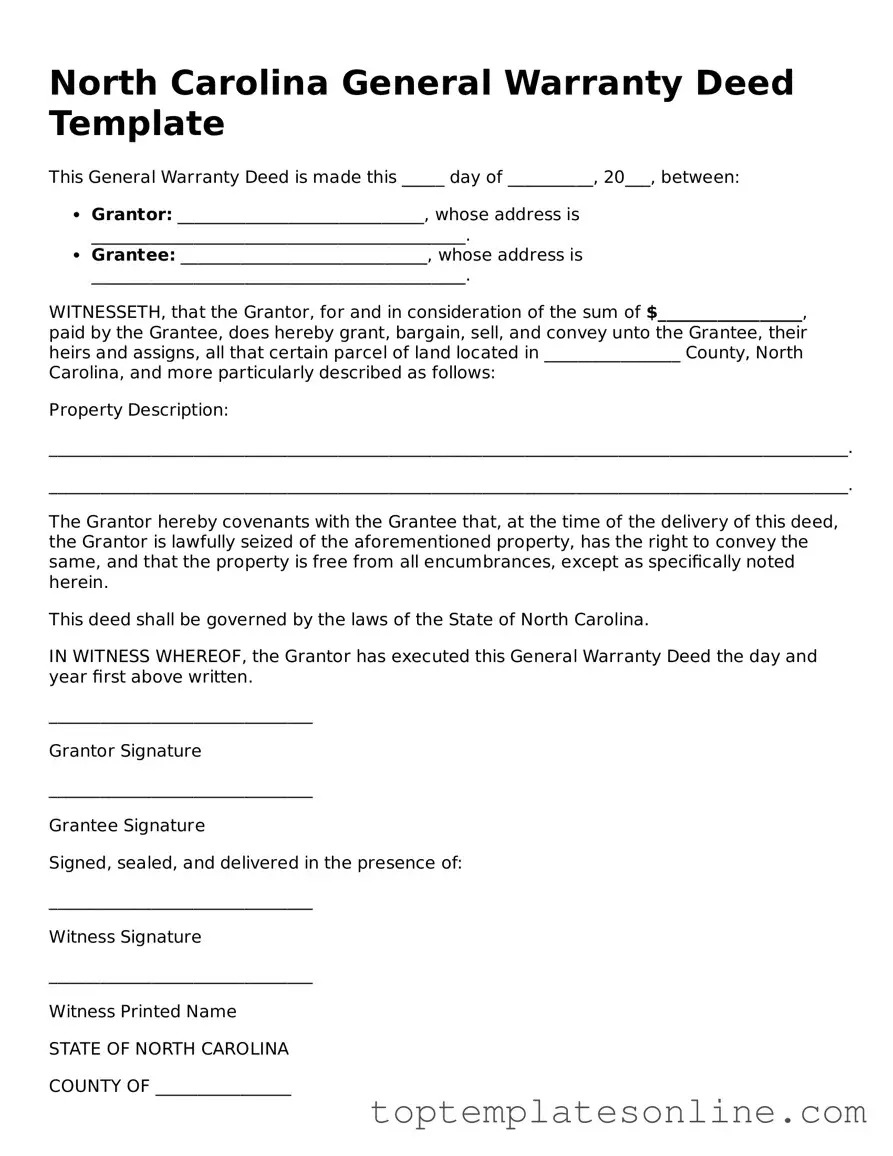In North Carolina, the Deed form serves as a crucial legal instrument for transferring property ownership from one party to another. This document not only identifies the grantor, or seller, and the grantee, or buyer, but also provides essential details about the property being conveyed. Key elements of the Deed include the legal description of the property, which outlines its boundaries and location, as well as the consideration, or the amount paid for the property. Additionally, the form may contain covenants, which are promises made by the grantor regarding the property, and any necessary signatures and notarizations to validate the transaction. Understanding the intricacies of the North Carolina Deed form is vital for ensuring that property transfers are executed smoothly and legally, protecting the rights of both parties involved. By familiarizing oneself with this important document, individuals can navigate the complexities of real estate transactions with greater confidence and clarity.
